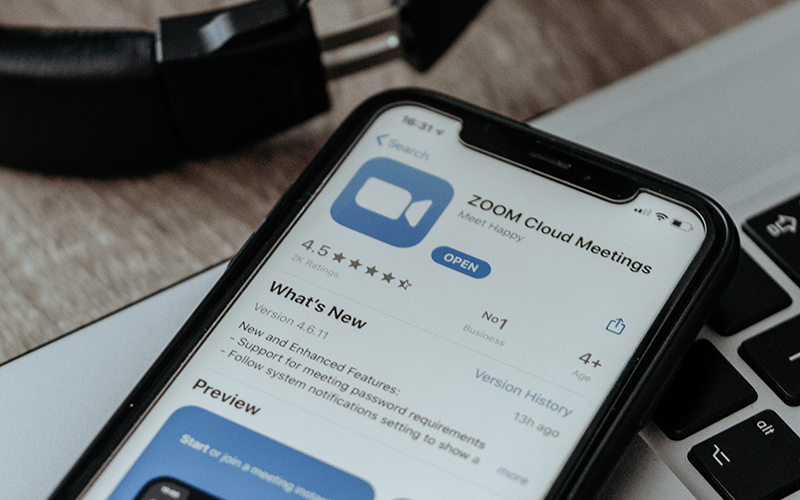Going Virtual in Times of Crisis

In a matter of two months, the entire world has been turned upside down.
Office spaces are empty, with floors of staff members working from makeshift home offices. Normal interactions—from simple greetings at the grocery store to informal meetings over coffee—have been replaced with quick glances and necessary cancellations. Large public gatherings? Now a seemingly distant memory.
This is the world of COVID-19, and it’s a world that comes with significant restrictions that’ve upended the way we live—and the way we do business. Despite technological advancements that’ve made telecommuting and teleconferencing manageable, in-person meetings and events were always the preferred choice in most marketing and public relation plans. Up until less than 10 weeks ago, these types of calendar items were still scheduled. Yet, today, as we continue to navigate the pandemic and public health concerns, marketers are scrambling to find a new path forward.
So what happens when all these types of events—from large-scale conferences to press briefings to launch announcements—have to utilize available technology to go virtual? You have to rethink and re-plan things that were once formulaic to accommodate the crisis of the times, all while breaking through the clutter and delivering on the goals of the intended event.
Over the last two months, The Martin Group has had to perform such virtual transitions both internally and externally for multiple clients. But in the case of the Cornell University-supported global agriculture competition Grow-NY, converting a live press event initially slated for a crowded farmers’ market to a virtual briefing required a coordinated and integrated effort across multiple agency departments and stakeholders—and required a carefully constructed gameplan to make the unconventional function as the conventional.
Here’s how our team took our initial plans and turned them into an executable occasion in the online realm.
Analyze the situation
No one wants to confront the impossibility of previously laid plans. But to successfully convert an in-person event to a virtual function, you have to scrutinize your state of affairs and see if you can make it work another way.
Due to the unforeseen circumstances of the ongoing COVID-19 crisis and the need to continue adhering to social distancing guidelines, the planned announcement of the second installment of the Grow-NY competition—featuring industry and government leaders at the Syracuse Farmers’ Market—had to be cancelled. Instead of relegating the briefing to an expansive press release, the TMG team leaned on its digital experience and enlisted the help of its PR, social media and paid media teams to coordinate a virtual briefing to live broadcast across the website and social media channels. By our estimation, this would work to maintain engagement and build excitement within both the industry and local community, as well as provide a platform for the competition’s reps to communicate how this year’s competition was ready to build upon last year’s successful endeavor.
Define your goals
Will the goals for your event be the same as they’d be in a traditional setting? That’s completely up to you and how you approach the digital space—but when laid out just right, you may find your goals may be more unchanged than you anticipated.
Despite going virtual, for Grow-NY, our primary goals were still connecting with media, influencers, and key stakeholders to announce the exciting details of the $3 million global competition for agtech startups and entrepreneurs, as well as specifics of the culminating Grow-NY Food and Ag Summit in Syracuse on November 17-18. Our secondary goals were to increase the number of incoming applications (and raise awareness of applications) throughout the submission period, ending on July 15. After reviewing these goals, we determined we could still accomplish all of them with a virtual production, so we proceeded with planning while understanding we may have to do more legwork to educate and inform our audiences of our new plans.
Whereas an in-person event would require a few TV crews and wayfinding signs to drive attention and ultimately crowds to the location, we relied more heavily on paid social media campaigns to get the word out to targeted geographical audiences in the Syracuse market, performed strategic media pitching and personalized influencer outreach to encourage “who’s who” log on and leveraged email marketing to encourage pro-active event registration.
Understand your limitations
What happens to the flair or fanfare of an on-site event when it’s relegated to an online webcast? A lot of it might be unnecessary—and this could be a good or bad thing. Businesses are learning this every day, as the absence of an in-person staff may save on costs, but might sacrifice much of the community or interaction that makes a specific workplace so desirable to available talent.
When taking our Grow-NY announcement from the backdrop of a vibrant (and topical) farmers’ market to a multiple-location online production, we’re obviously sacrificing setting—but these are the restrictions we’re living with. That makes the content of the message—as well as the run of show—even more vital than it typically is. If your information isn’t engaging, there’s no swag and on-site pyrotechnics to pad an otherwise underwhelming announcement.
The content is still the key, albeit served in a different setting. To enhance this content, we invited our past competition winners to participate in an engaging Q&A session on their progress to date and recruited our local politicians to submit video remarks on what the competition means for the region. We also didn’t shy away from addressing the elephant-in-the-room—COVID-19 and its impact on the regional trips and conference. These efforts ensure we created a run-of-show that still had that strong content hook and gave viewers the answers they were looking for.
Outline your tactics and logistics
Once you decide to transition your event to a virtual affair, there are plenty of tactics and logistics to consider, just as there would be for a traditional event. The biggest tactical decision specific for a virtual event may be whether to execute as a live stream, pre-recorded, or a hybrid of both.
With Grow-NY’s May 14 launch briefing, our team recommended a pre-recorded video stream recorded on Zoom and powered by the Vimeo Livestream platform. While the platform allows for live and pre-recorded video integration, removing the live component would allow us to mitigate technology malfunction risks, all while still producing engaging content—delivered by a diverse speaker list, showcasing imagery from year one of the competition, and coordinated by a well-organized event outline. This pre-recorded content could also be broken up and distributed across social media platforms, allowing the event to be consumed in digestible soundbites as part of a larger communications plan—which is one great advantage that virtual events have over in-person ones.
Ultmately, you need to explore available software and technologies that fits your needs best. Some events may be more suited for a casual Facebook Live, others may need Q&A discussions on a Zoom or GoTo Meeting. Think about how much interactivity your event needs, the technology requirements of your audience and your campaign budget.
Remember: Traditional promotion still applies
Whether your event is happening via podium or portal, there’s still PR. There are still story pitches and press releases, and there’s still an extension of the on-site messaging across social media.
This makes the public relations and promotion aspect of the transition the most easily transferrable—albeit with a caveat. Without on-site access for cameras or reporters, this has required more detail for the Grow-NY event pitches, but has also provided additional opportunities. Pre-recorded footage could be made available for embargoed distribution, which could whet interest for larger, more detailed pieces by targeted media outlets. For paid digital and social, the decentralized nature of the event presents an opportunity to leverage paid advertising in combination with a destination landing page to capture lost attention, as well as a call-to-action to the competition website for more information.
While we wait to pivot toward a functionality we’re more accustomed to, now is the time to explore new avenues—and see if they can take our professions and plans to more inventive places.


